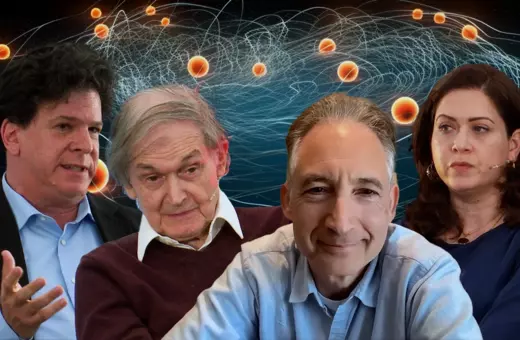Physicists have long hoped to discover a single, all-encompassing theory of everything that would unlock the secrets of the universe. But, as LMU Munich philosopher of science, Stephan Hartmann, argues, a new picture is emerging—one where no single framework reigns supreme. Effective field theories are transforming how we understand science itself. Rather than reducing everything to fundamental laws, they offer a patchwork of powerful, scale-sensitive models that reflect the layered structure of reality. What, if the most reliable truths are not universal, but local, scale-dependent and context-dependent?
For centuries, science has pursued the dream of a “Theory of Everything,” a single, elegant framework explaining the universe, from the tiniest particles to the grandest galaxies. Writing in 1980, Stephen Hawking predicted this theory might be found by the end of the twentieth century. But today, many physicists are charting a different course. At the heart of this shift lies an unlikely hero: effective field theories. While this article focuses on the framework of effective field theories in physics, the broader theme that knowledge often comes in scale-sensitive layers extends well beyond physics, reaching into fields such as biology and technology.
Effective field theories are remarkably modest in ambition. They describe what is relevant at a particular energy scale and set aside what is not. Their strength lies in precision and adaptability, not in claims of ultimate truth. Rather than offering a “God’s-eye” view of the universe, they offer locally valid and remarkably useful tools, much like carefully crafted maps designed for navigating specific terrains.
Physicist Steven Weinberg captures this tension better than anyone. On the one hand, he was a founding figure in the development of effective field theories and helped establish them as a central tool in modern physics. On the other hand, he remained committed to the ideal of a final, all-encompassing theory—a theme he passionately defended in his influential popular book Dreams of a Final Theory. Weinberg’s legacy thus embodies a deeper philosophical question: can the patchwork success of effective theories coexist with the hope for ultimate unification? Or does the very success of effective field theories suggest that nature resists being captured by a single, all-embracing framework?

This question opens the door to a broader reconsideration of how science works. The shift toward effective field theories challenges traditional views about reductionism, emergence, and scientific realism, inviting a humbler but arguably more honest picture of knowledge. In a world where understanding often comes in pieces, effective field theories do not aim to unify everything at once, but instead teach us how to work productively with fragments—offering tools tailored to scale, context, and purpose.
A Tower of Theories
Effective field theories describe how systems behave at specific energy scales, ignoring the finer details of higher energies (or, equivalently, shorter distances). They are remarkably successful in practice: chiral perturbation theory (an effective field theory that describes how protons, neutrons, and pions interact at low energies in nuclear physics), the Standard Model of particle physics, and even general relativity can be seen as effective field theories. They allow us to make predictions where more fundamental theories are either unavailable or intractable.






















Join the conversation